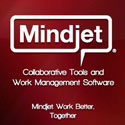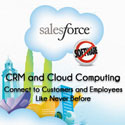Customer Service and The Human Experience
Posted on January 05, 2012 by CJ Article Team

Historically, customer service was delivered over the phone or in person. Customers didn’t have many choices, and switching to competitors was cumbersome. Today, these methods are but two of the many possible touch points of entry for any given interaction. With all the options the Internet brings, competition is literally a click away. If, as has been reported, 65% of your business comes from current customers, then in order to stay in business, you best focus on winning the satisfaction and loyalty of those customers.
With continued attention on customer service, customer retention, and lifetime value of the customer, it is no surprise that contact center operations continue to increase in importance as the primary hub of a customer’s experience. The contact center is still the most common way that customers get in touch with businesses. In fact, Gartner reports 92% of all contact is through the center.
While much attention has been focused on the technology and benefits of providing multiple channels for customer contact, little consideration has been directed to handling the human part of the equation–training Customer and Technical Service Representatives to field more than just telephone communications. With the explosion of e-commerce, the need to reinforce keeping the human element in the equation is paramount. Certainly now more than ever before in history, customer-centric service is a necessity.
Twenty five years from now customers will still be human beings, still be driven by desires and needs. Virtual environments do not create virtual customers. Except for the simplest transactions, some customers still need to be connected with and nurtured by a live person. Amazon.com has learned this. They employ hundreds of traditional customer service representatives using phone lines to help customers with questions that cannot be dealt with online.
With the ability to handle simple transactions available by using sophisticated, self-service technology, customer calls, faxes, and/or e-mails are more complex, more complicated, sometime even escalated, heightening stress levels.
At the same time, research has identified the Customer Service and Technical Representative as one of the ten most stressful jobs in America today, with job stress costing employers an estimated $300+ billion yearly in absenteeism, lowered productivity, rising health insurance costs and other medical expenses (up from $200 + billion just ten years ago.)
A recent NIOSH study reported that 50% of employees view job stress as a major problem in their lives–double from a decade ago.
Lines of demarcation have blurred and change is rampant in today’s center. Why? Because of our cell phones, voice mail, faxback, PDA’s, and e-mail. We are now more available and accessible than ever before. The lines are no longer clear as to where our jobs or projects begin and end–they can follow us home again and again.
In today’s competitive marketplace there is little difference between products and services. What makes the difference–what distinguishes one company from another–is its relationship with the customer. Who has the awesome responsibility for representing themselves, their companies, perhaps their industry in general? Front line representatives.
The ability of a company to provide human-to-human connections–back and forth live communication–continues to be critically important. The fact is voice is the most natural and powerful human interface, real time or otherwise. That isn’t going to change any time soon. To the customer, people are inseparable from the services they provide. Actually, the person on the other end of the phone is the company. It is no wonder, then, that companies with superior people management, invest heavily in training and retraining, reinforcing the human element.
Yet customers still leave. The latest statistics on why are:
o 45% because of poor service
o 20% because of lack of attention.
This means that 65% of your customers leave because of something your front line is, or is not, doing.
o 15% for a better product
o 15% for a cheaper product and
o 5% other
This is the good and the bad news. It’s bad news because that’s a high percentage. On the other hand, it’s good news because there is something you can do about it–it resides on the human side.
It is agreed that people, process, and ‘state of the art’ technology are what make companies work. For me, the people process is most important. After all, it’s the people who truly make the difference.
Never lose sight of the fact that we are human beings, not merely ‘human doings.’ The fact is 70% to 90% of what happens with customers is driven by human nature, having nothing to do with technology. Technology is meant to enable human endeavors, not to disable them.
Extraordinary service or lack thereof, separates the good from
the great companies. As more and more organizations are turning to the contact center as a strategic player in the competitive landscape, it is in the throes of re-inventing itself to step up to the plate and become the heart of a company’s customer facing operations.
Empathetic Responsiveness
The ability to put yourself in another person’s shoes and see their point of view–not agree with them, not make them right and your company wrong–but hear what they are saying. After all, basic needs of all of us are to be heard and treated with dignity and respect.
I think of a call as an ABC process. ‘A’ represents the customer presenting their question, request, complaint or problem. ‘C’ is the ultimate resolution. Most times ‘B’ is either skipped or left out–because of metrics, calls in queue, or simply because you know the answer before the customer is even finished speaking. ‘B’ is where the agent acknowledges what they hear–be it upset, anger, frustration, or fear. Or, a simple ‘thank you for taking the time to call and bring this to our attention.’
After all, if a customer calls in to complain, you have the opportunity/challenge to turn them around. If they don’t call, and only complain to other people, you have no opportunity. Does going through ‘B’ take longer? Not at all. It allows you to move the customer to a more productive interaction and close the call. I’ve heard many customers repeat their opening paragraph (A) over and over, while at the same time the agent is trying to get them to resolution (C). Red alert! Red alert! Acknowledge what is behind the words and you will move them quickly to ‘C.’ I believe you can’t go from A to C without going through B.
If all customers wanted just the facts (and some do), they could ascertain the information online. Most customers (people) want the human interaction, someone to hear them, someone to care. A simple, “I’m so sorry that was your experience. My name is Rosanne and I’m going to do my best to help you right here and now.”
Self Service
When asked the question in a recent study, “What is the biggest barrier your company encounters to self-service effectiveness?” only 14% of the customers replied they don’t know about it.’ This means that the 86% who do know about it and attempt to use it (1) find it too hard to navigate, (2) can’t find the answers, and/or (3) don’t trust the system or the answers they do find.
Research shows that customers prefer to deal with companies who are the most consistently accessible. When customers experience a level of service from email and chat support, for instance, that equals or exceeds voice support, then and only then will they gladly migrate to those channels to resolve their problems and inquiries.
To increase customers’ satisfaction, be sure to:
1) Phone: Have a ‘zero out’ option on your system
2) Website: Have your phone number or a button to speak with a human
3) E-mail: Rephrase the issue in the opening paragraph.
Purchasing Process
In an interview with Delia Passi Smalter, the former publisher of Working Woman and Working Mother magazines, we found very interesting statistics regarding female demographics (Incentive Magazine, 2003). It seems that women are making over 85% of consumer purchases and influencing more than 95% of total goods and services. Smalter distinguishes the purchasing process women and men go through. The biggest one, she says, is that women need to feel more of a connection to the TSR; they need to trust the corporation and the brand. Price becomes secondary. Women take in a lot of information, including recommendations from friends and family, company and brand reputation, feelings about her contact person, and how the brand will impact her life. Not so for men. Men take a systematic approach, allowing outside influence to some degree, but mostly they are focused on price.
One of the most influential documents in the world, the U.S. Constitution, begins with “We, the people…” Yes, ‘we the people’ are what makes the difference.
Article Source: http://EzineArticles.com/20314
Facebook Comments:

































